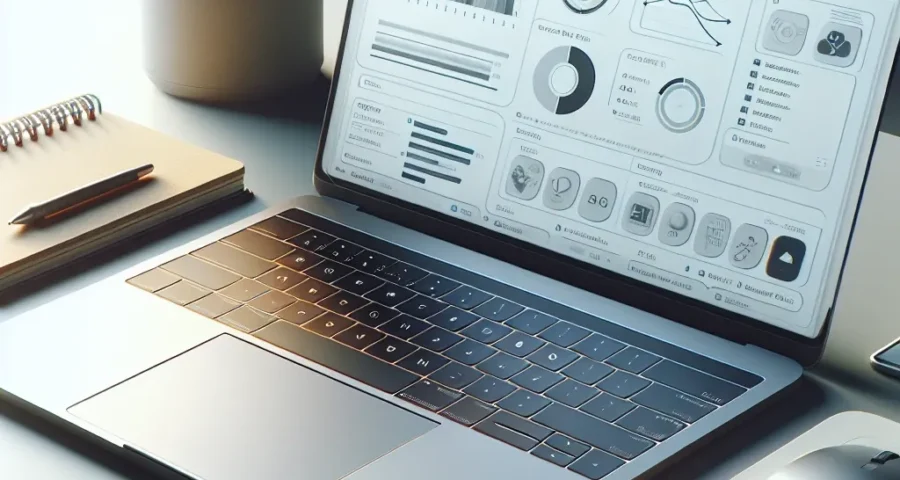Taking screenshots is an essential skill for documenting errors, capturing moments, or saving important information while working on your Lenovo laptop. Whether you’re capturing a full screen, a window, or a specific part of your screen, Lenovo laptops offer multiple methods. This guide will cover different methods you can use to take screenshots easily and efficiently on your Lenovo laptop.
Methods for Taking Screenshots on a Lenovo Laptop
Lenovo laptops come with several built-in tools and keyboard shortcuts for taking screenshots. Depending on your specific needs, you might prefer one method over the others. Below is a comprehensive list:
| Method | Description | Usage Steps |
|---|---|---|
| Using Print Screen (PrtSc) | Captures the entire screen and saves to clipboard | Press the Print Screen (PrtSc) key on your keyboard. Open an image editor like Paint, paste the screenshot (Ctrl + V), and save it. |
| Windows + Print Screen | Saves the entire screen directly to your hard drive | Press Windows key + Print Screen. The screen will dim momentarily, indicating a screenshot was taken. Find your screenshot in the ‘Screenshots’ folder inside the ‘Pictures’ library. |
| Alt + Print Screen | Captures the active window and saves to clipboard | Press Alt + Print Screen. Open an image editor like Paint, paste the screenshot (Ctrl + V), and save it. |
| Snipping Tool | Allows capturing custom screen areas | Open the Snipping Tool application by searching for it in the Start menu. Choose the mode: Free-form, Rectangular, Window, or Full-screen. Create your snip and save it. |
| Snip & Sketch (Windows 10) | Enhanced version of the Snipping Tool | Press Windows key + Shift + S. Select the area to capture. A notification will appear; click it to open the Snip & Sketch editor, where you can save the screenshot. |
| Third-Party Software | Advanced features like annotations and timed screenshots | Download software such as Lightshot or Greenshot. Follow the software-specific instructions to capture and edit screenshots. |
Using the Print Screen (PrtSc) Key
The simplest method to capture your screen is using the Print Screen key. It copies the entire screen to your clipboard, allowing you to paste it into any image editing software.
Steps:
- Press the Print Screen (PrtSc) key on your keyboard.
- Open an image editor like Paint.
- Press Ctrl + V to paste the screenshot.
- Save the file to your desired location.
Using Windows + Print Screen
This method directly saves the screenshot to a designated folder without needing to paste it manually.
Steps:
- Press Windows key + Print Screen simultaneously.
- Your screen will dim momentarily to indicate a capture.
- Navigate to the ‘Pictures’ library and open the ‘Screenshots’ folder to find your image.
Using Alt + Print Screen
If you need to capture only the active window, this shortcut will come in handy.
Steps:
- Press Alt + Print Screen.
- Open an image editor like Paint.
- Press Ctrl + V to paste the active window screenshot.
- Save the image file.
Using the Snipping Tool
The Snipping Tool allows for more detailed captures and annotations. It offers several modes to capture different parts of your screen.
Steps:
- Search for ‘Snipping Tool’ in the Start menu and open it.
- In the tool, click on ‘New’ and choose the snip type: Free-form, Rectangular, Window, or Full-screen.
- Select the area to capture.
- Annotate if needed and save your screenshot.
Using Snip & Sketch (Windows 10)
Exclusive to Windows 10, this tool offers an improved interface and extra features like delayed capture.
Steps:
- Press Windows key + Shift + S.
- Choose your desired snip type.
- The selected area will be saved to the clipboard and a notification will appear.
- Click the notification to open the screenshot in Snip & Sketch.
- Edit as needed and save the file.
Using Third-Party Software
For advanced screenshot needs, third-party software can offer additional features like annotations, cloud storage, and timed screenshots.
Recommended Software:
- Lightshot: Simple and easy-to-use with quick uploads.
- Greenshot: Open-source tool with comprehensive features.
Steps:
- Download and install the software of your choice.
- Follow the in-software instructions to capture, edit, and save screenshots.
By using these various methods, taking screenshots on your Lenovo laptop can become a seamless part of your workflow. Choose the technique that best fits your needs for capturing, editing, and saving screens effectively.


Leave a Reply